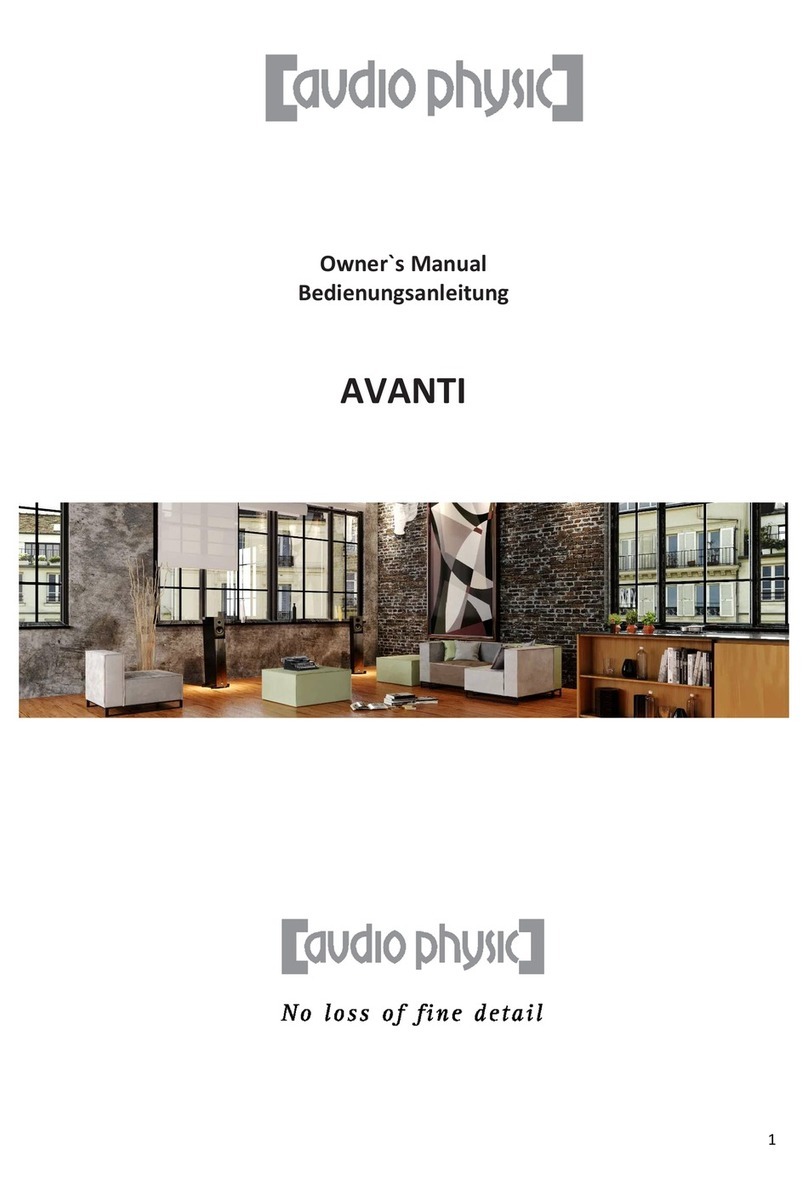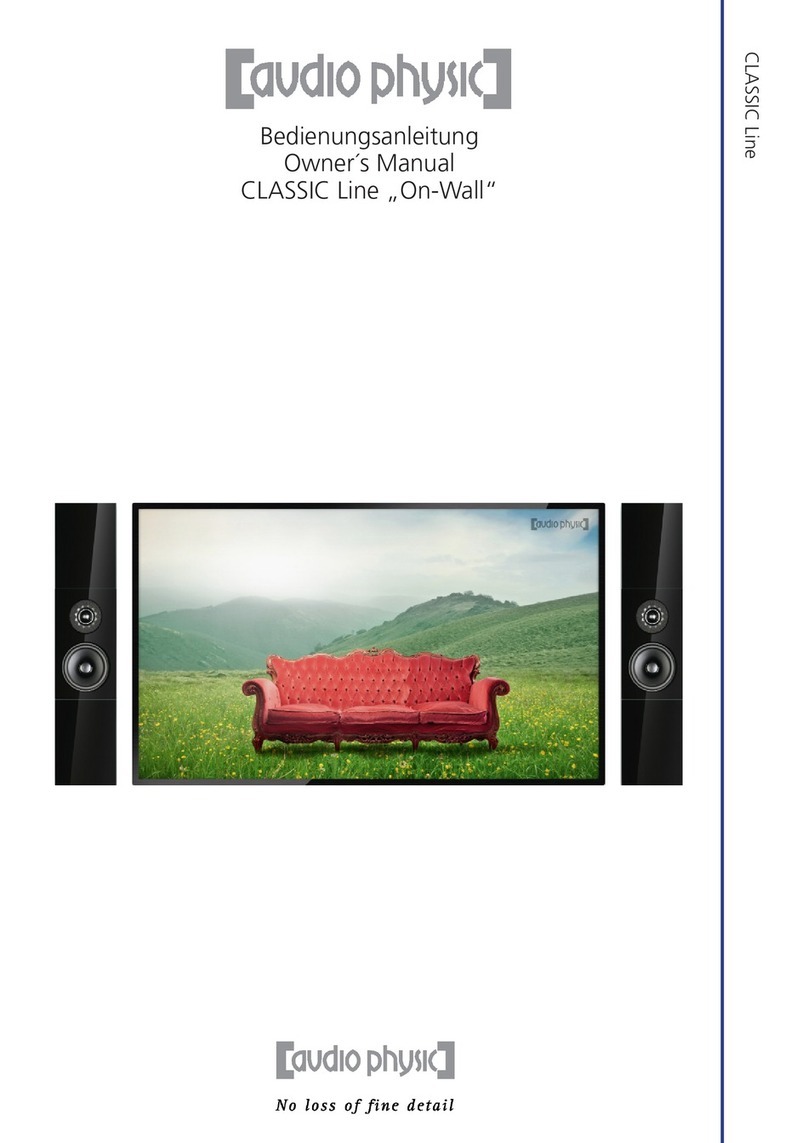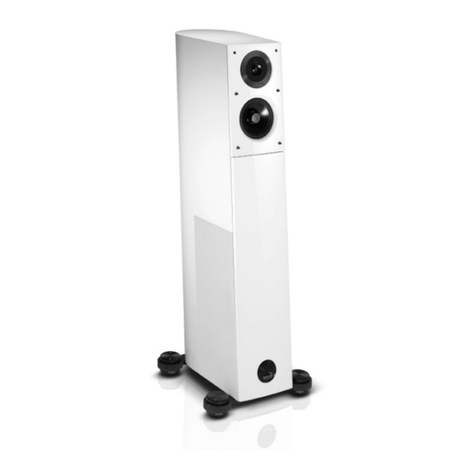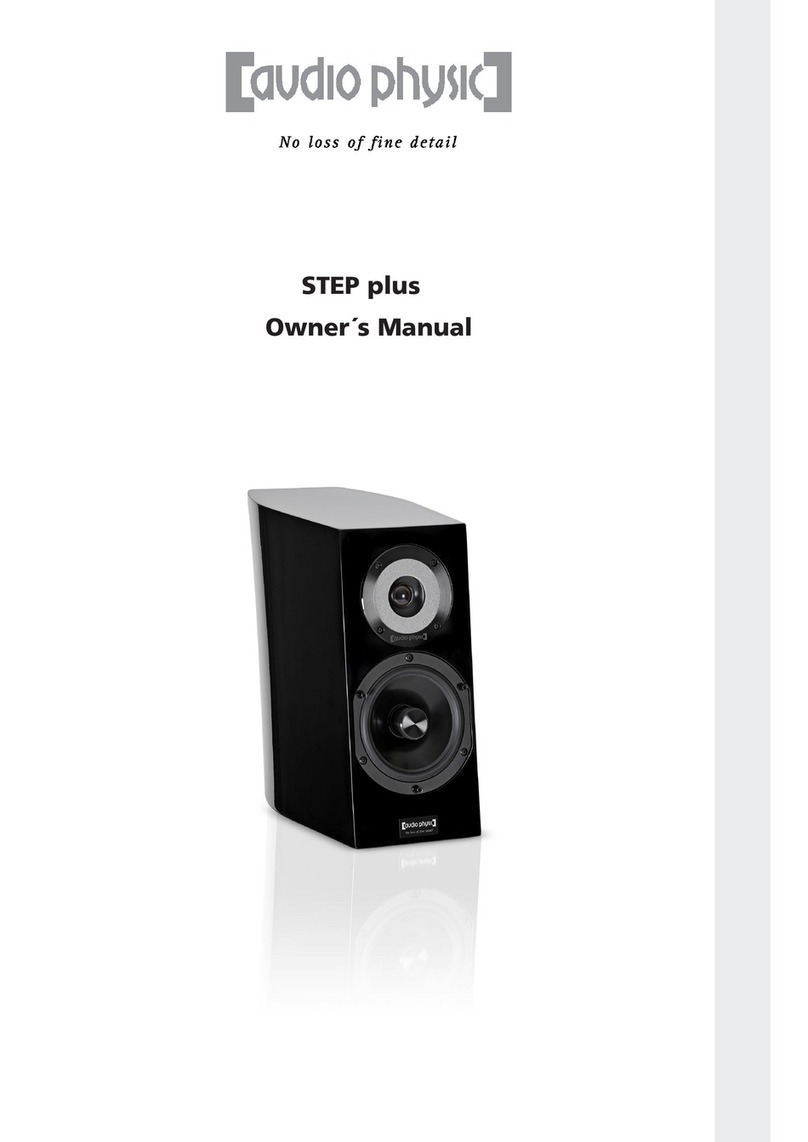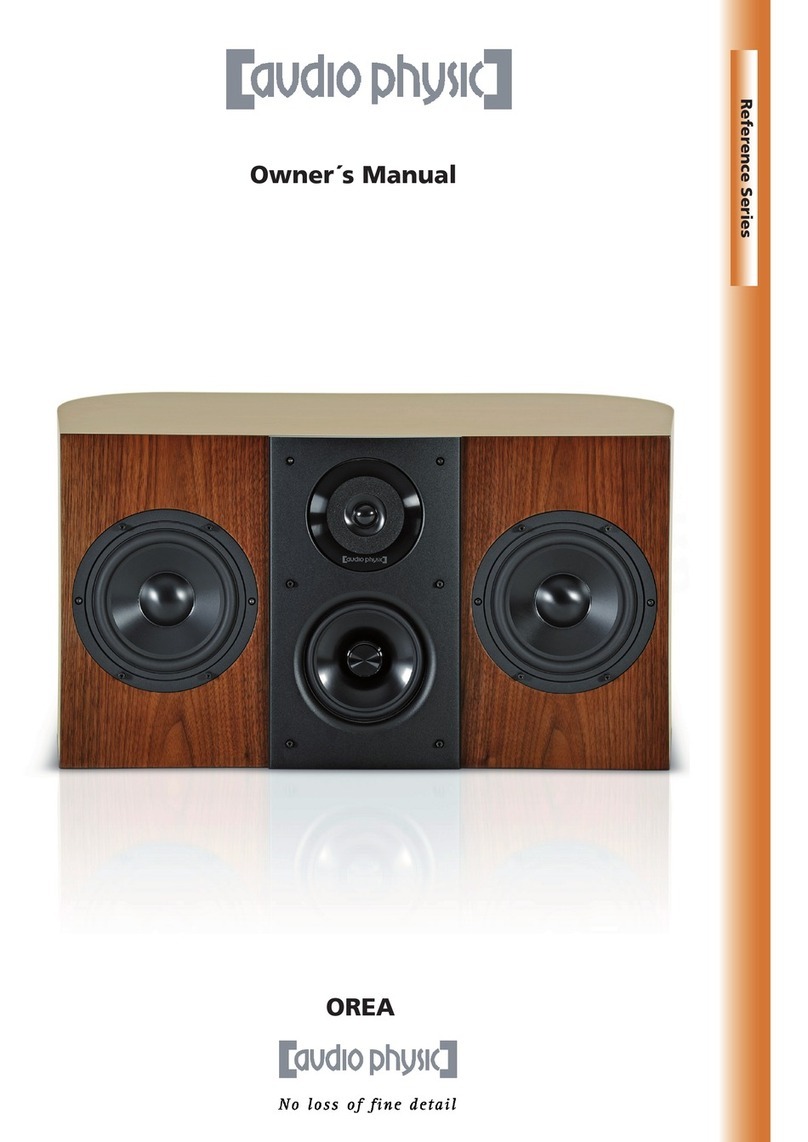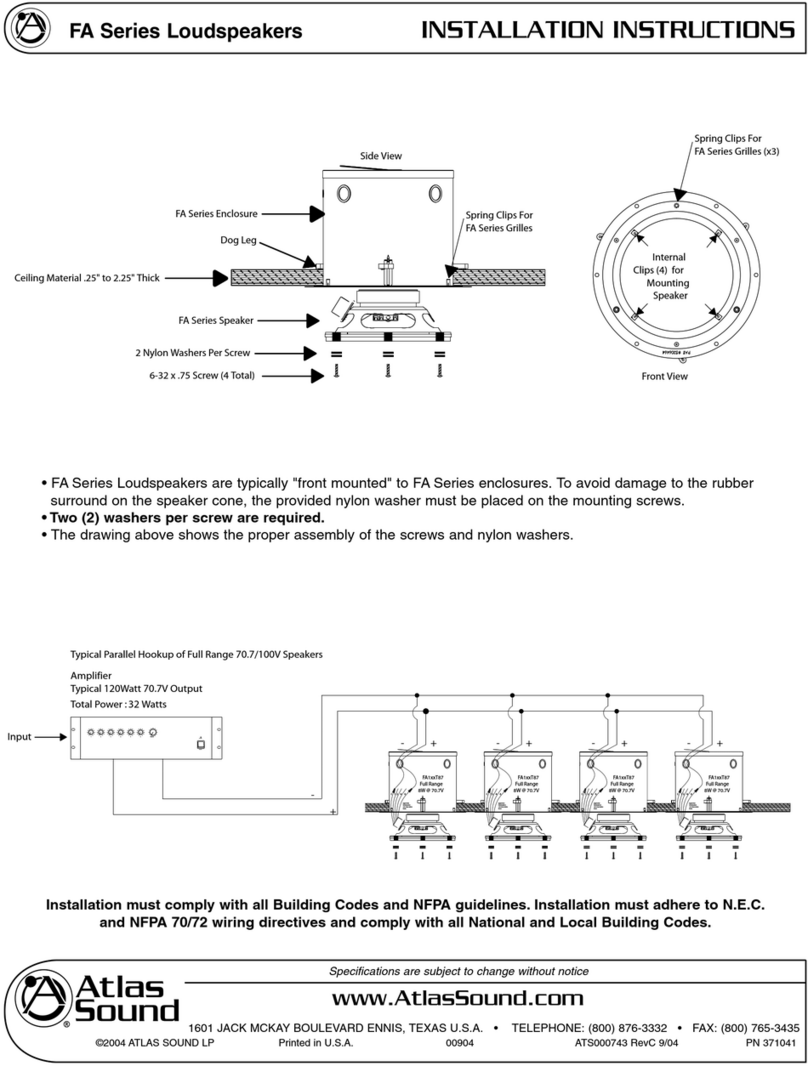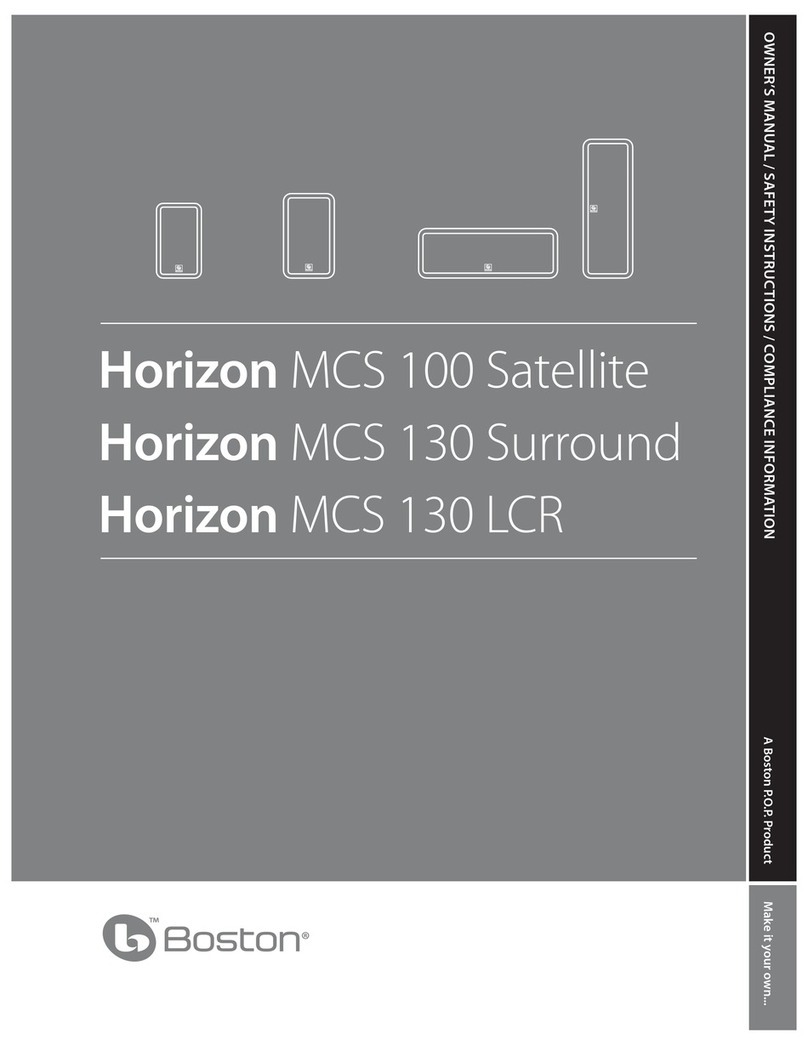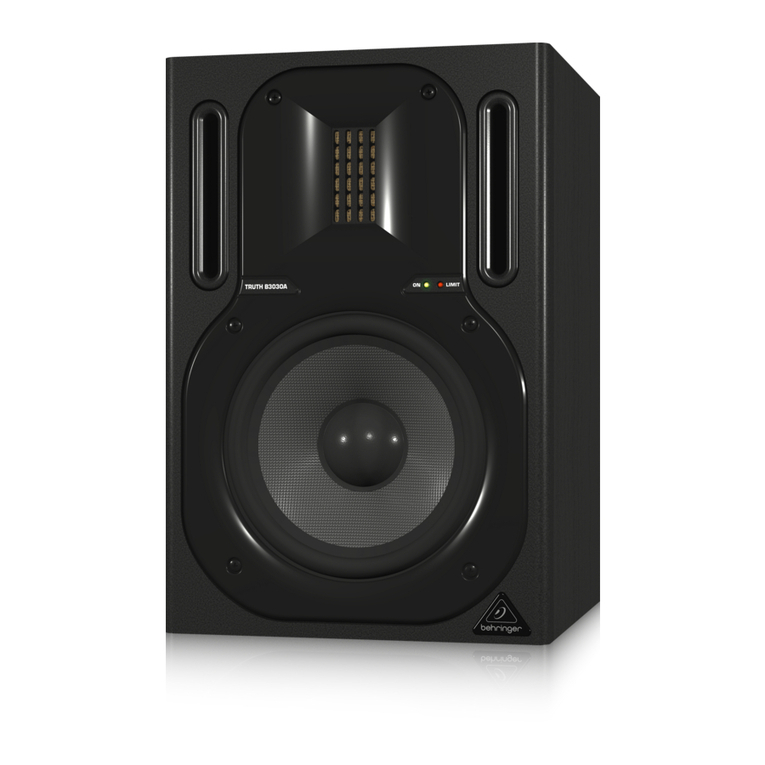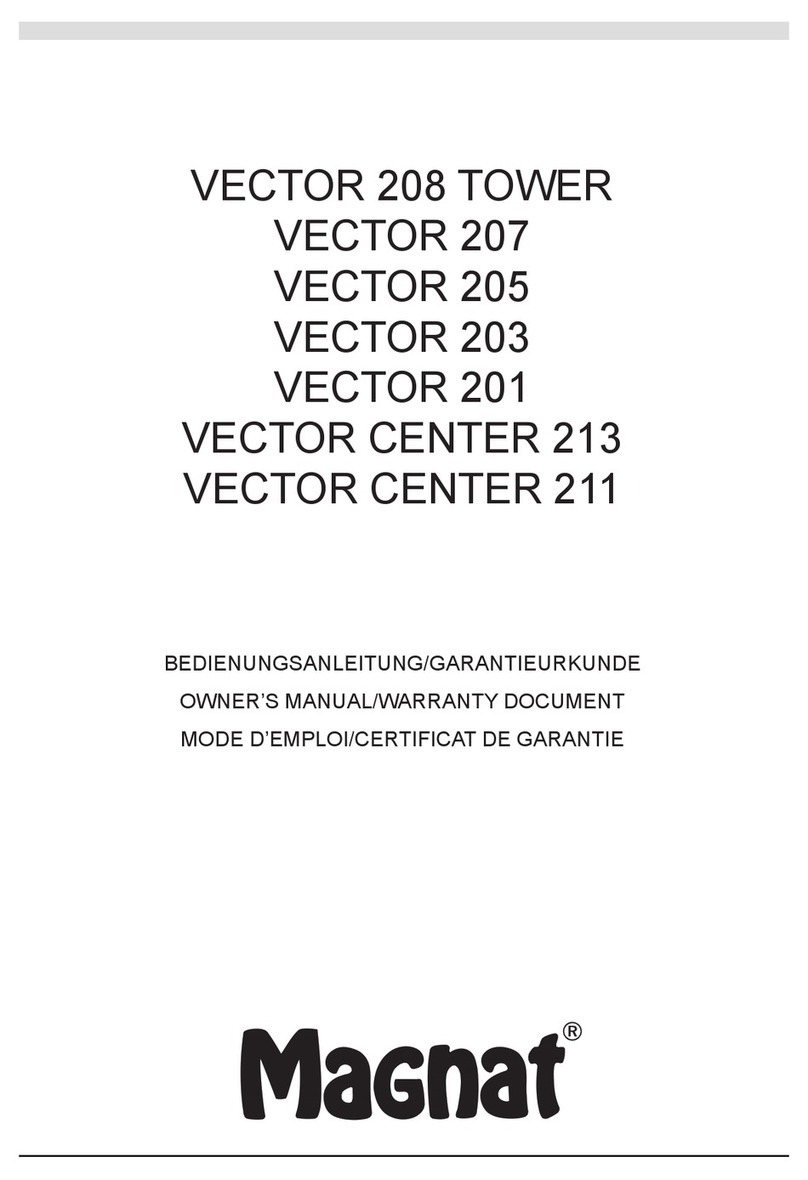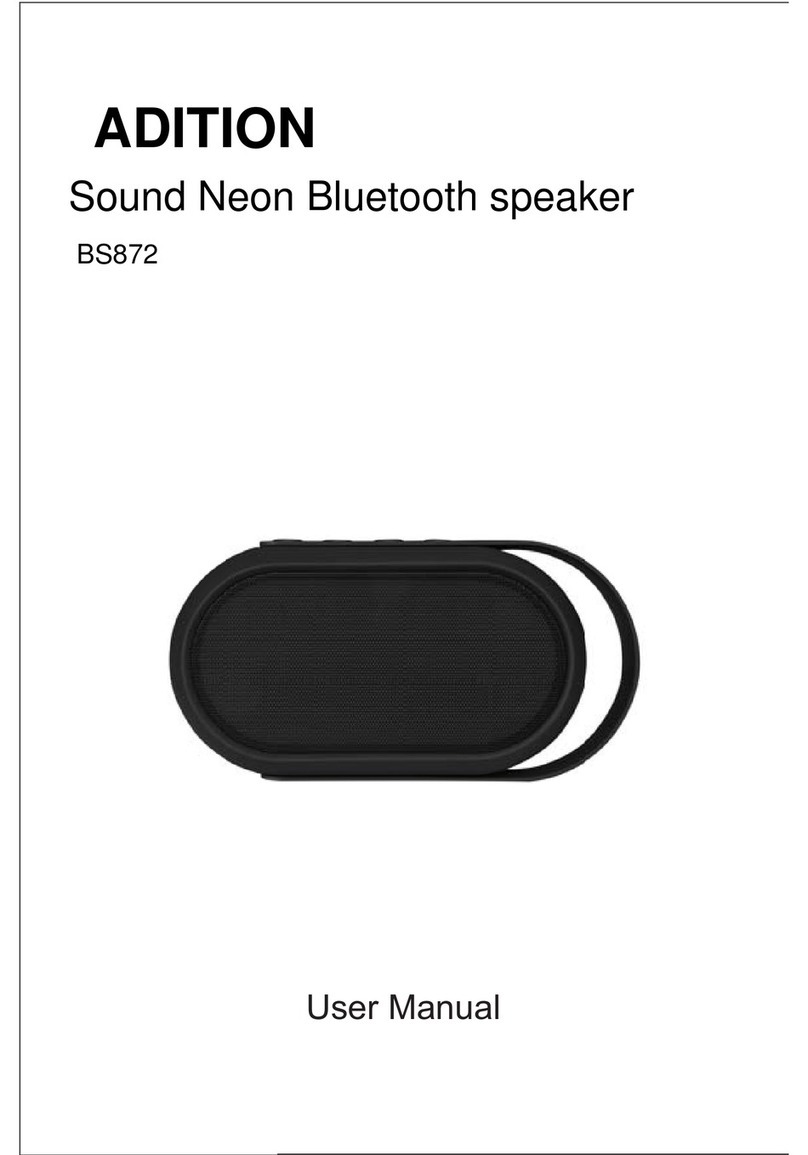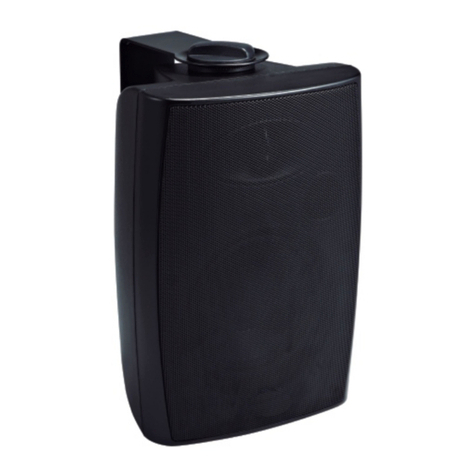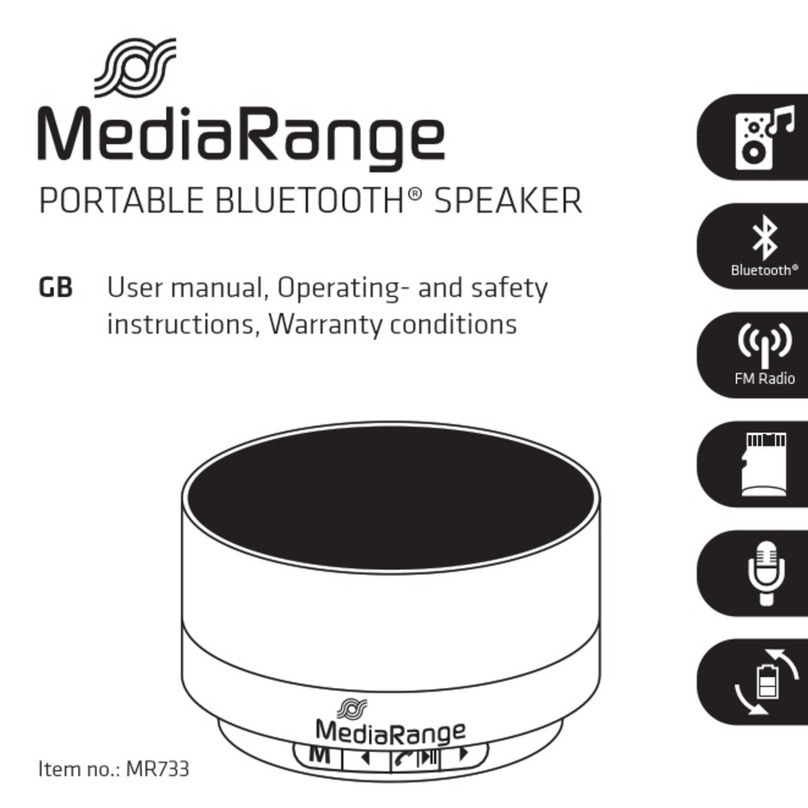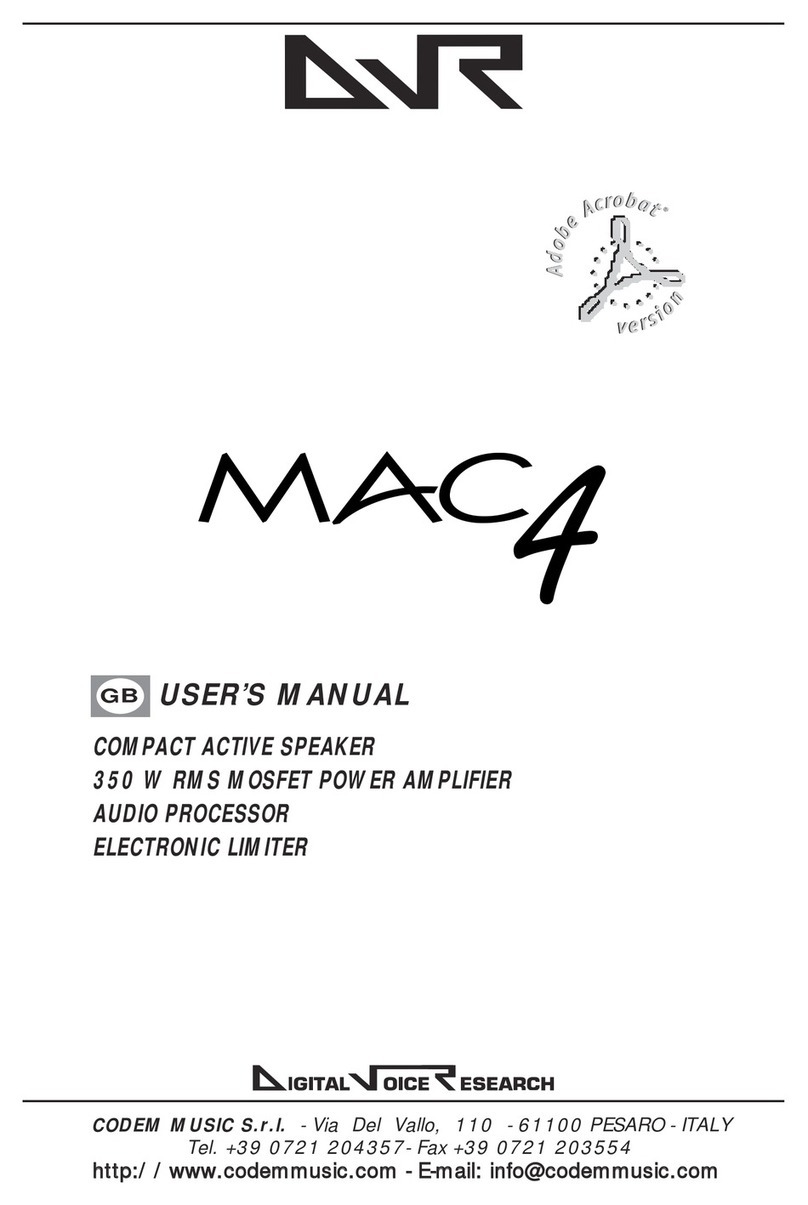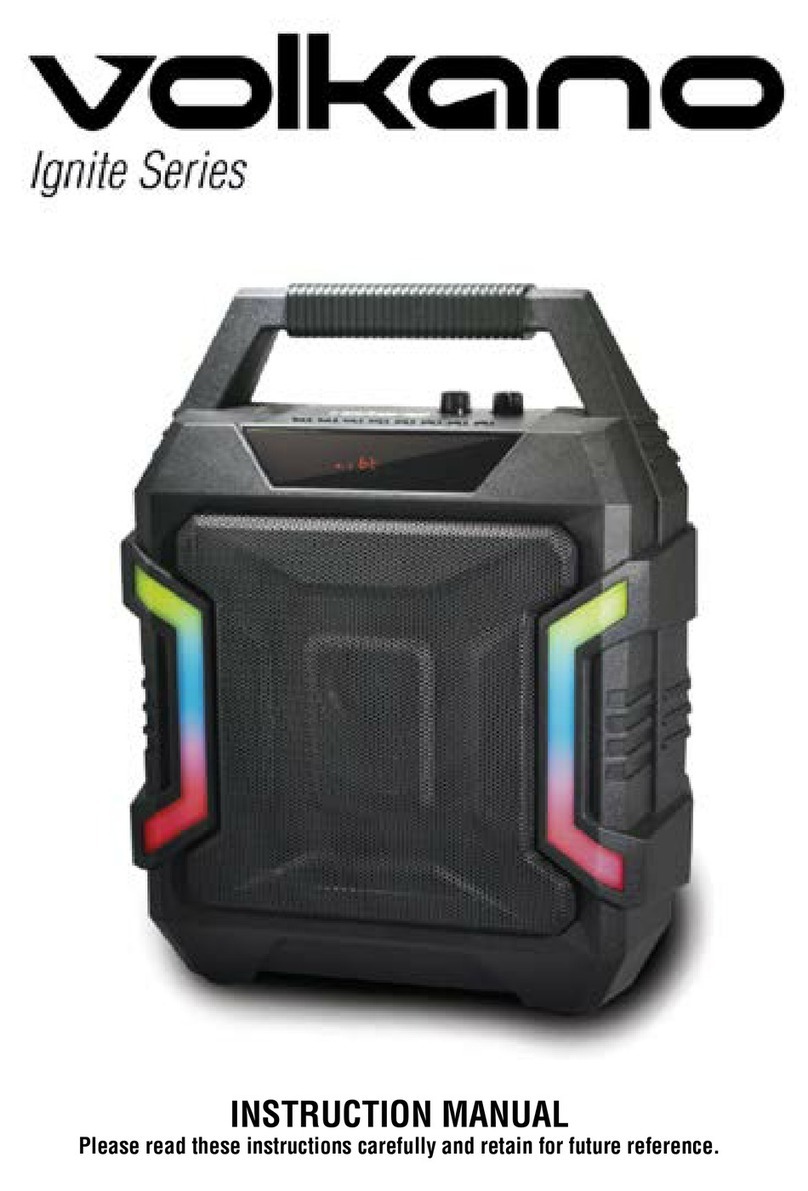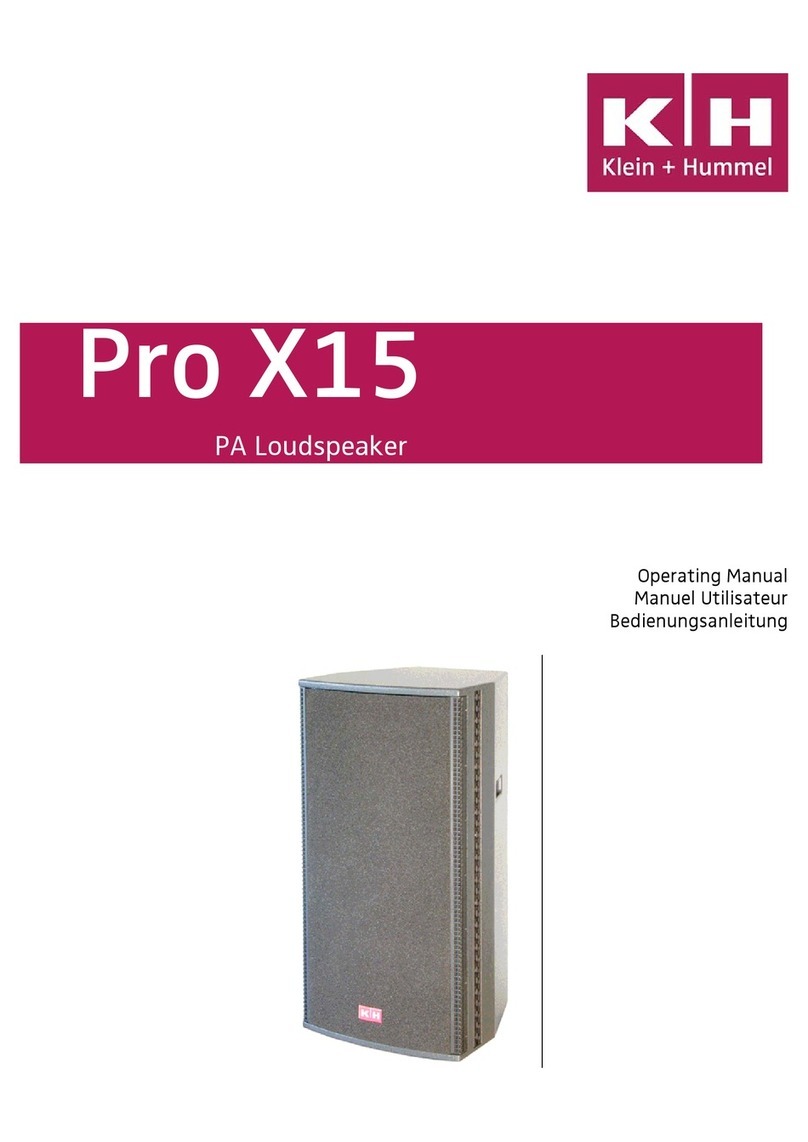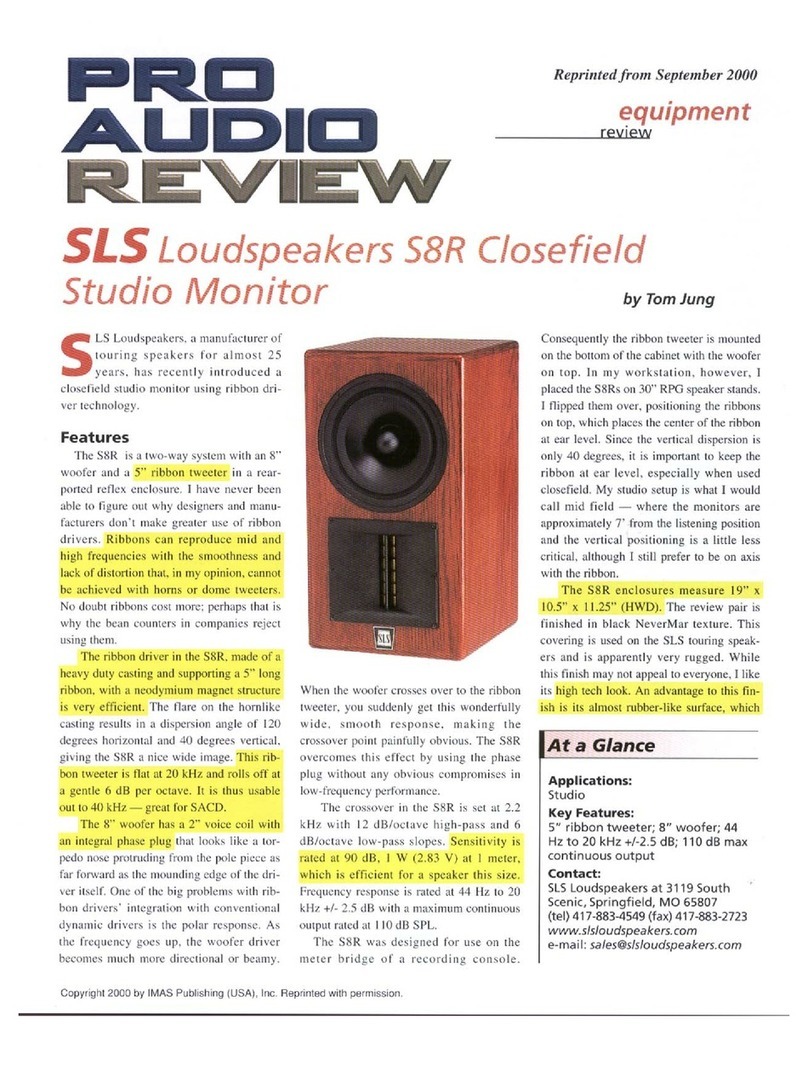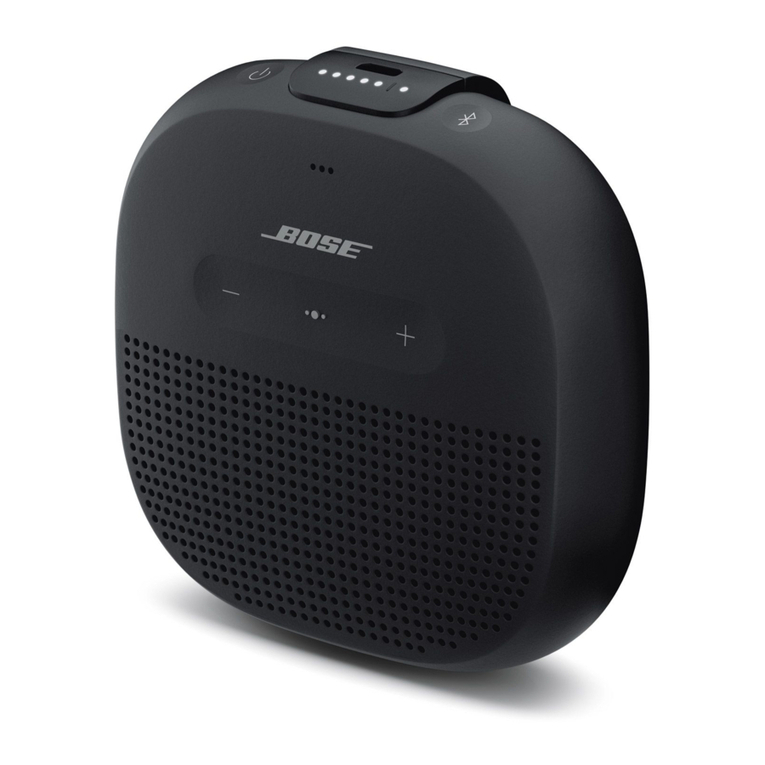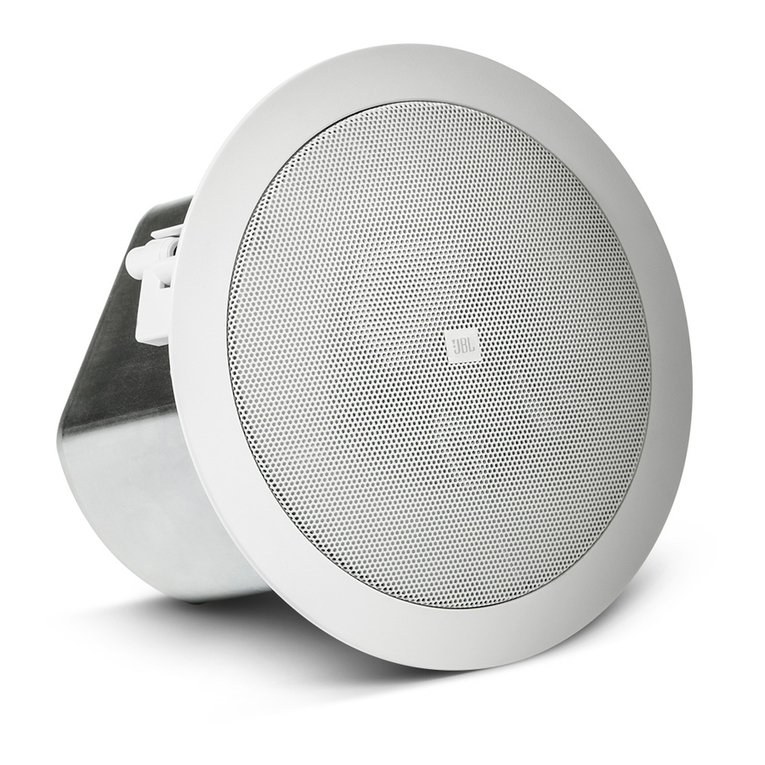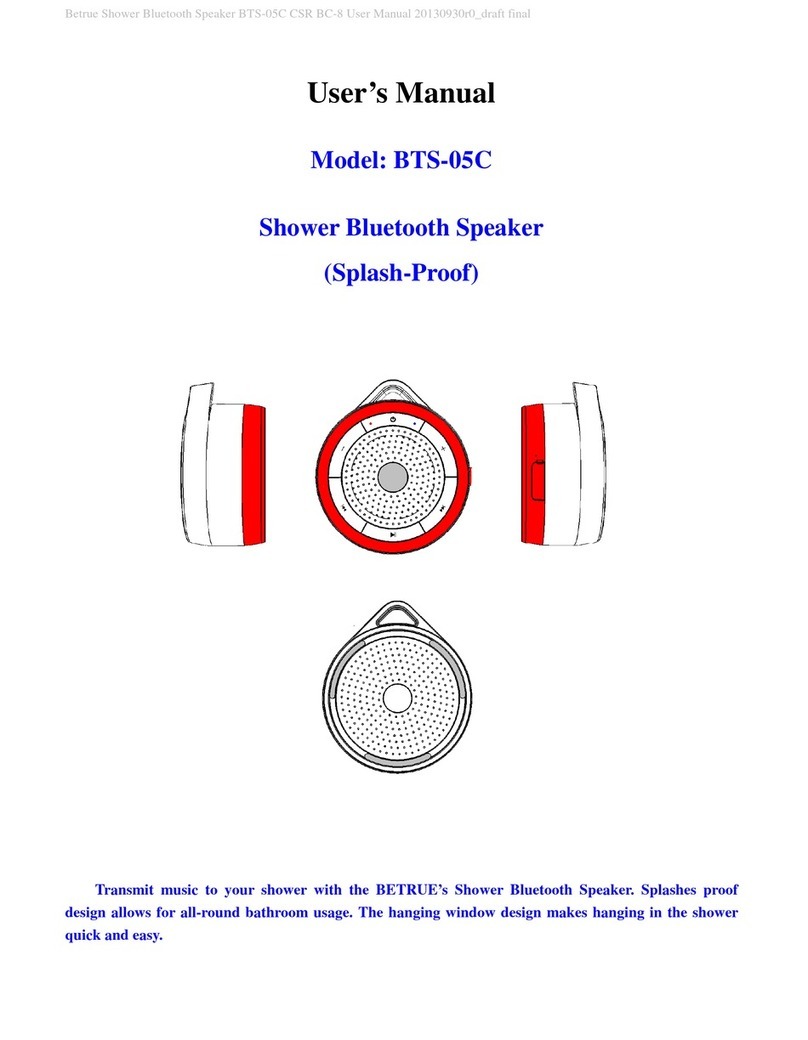
17
AUDIO PHYSIC VIRGO III english
Setting Up Your VIRGO III
1. The ideal placement of your loudspeakers in your
room involves positioning them in an isosceles
triangle arrangement including your listening seat,
creating equal spacing between each loudspeaker
and the listening position.
2. The distance between the loudspeakers should be
around 0.8 - 1.2 times as much as the distance
between the loudspeakers and the listening position.
The closer you sit to the loudspeakers, the more
direct and dry your sound experience will be.As you
move further away from the loudspeakers, the bass
response will normally increase and the spatial
imaging will seem more generous.
3. Your loudspeakers should ideally be placed around
40 centimetres or further away from the surrounding
walls, The larger the space between the loudspeakers
and the back wall, the more precise the sound
reproduction, particularly where bass performance
is concerned.
4. The closer the loudspeakers come to the back wall
(and/or side wall), the more powerful the broadband
reproduction of the low frequencies will be – resulting
in stronger bass tones and full-bodied voice tones.
5. This effect can be made even more intense when the
loudspeakers are placed in a corner. Low tones
become around 6 decibels (or more) louder. Use
software with which you are familiar to try out
different placements and you will soon nd the
position that best suits your own personal tastes.
6. Alongside the strength of the bass response, the
distance from the side walls also particularly affects
the localisation of sound events and therefore the
precision of the spatial imaging. As the distance
from the walls increases, the localisation will become
more precise and the sound will be more balanced.
When the loudspeakers are extremely close to the side
walls, this will result in early reections, leading to
reduced spatial perception and tending towards
nervous sound reproduction. Curtains or shelves
or similar at the sides reduce this effect.
7. Ifyouwanttopositionyourloudspeakersontheleftand
right-handsidesofacupboardoratallsideboard,please
ensure that the fronts of the loudspeakers are level
with the front of the cupboard or sideboard. If the
loudspeakers are positioned further back than the
furniture, this will have an effect on the sound, not
only in the form of early reections from the side walls
of the cupboard as explained under point 6 but
also, in some cases, by disrupting the unobstructed
radiation of sound.
Setup close to
the wall:
Low frequencies
are broadly
reinforced by
around +3 and
+6 decibels
when the
loudspeakers
are positioned
close to the
wall.
Setup in the
corners of the
room:
Low tones
become
signicantly
louder and
overlap into
the midrange
frequencies.
Setup away
from the wall:
The loudspeakers
are positioned at
least
40 centimetres
away from the
surrounding
walls. This
provides a clearly
dened bass
response and a
clean, crisp
reproduction
of midrange
frequencies.




















